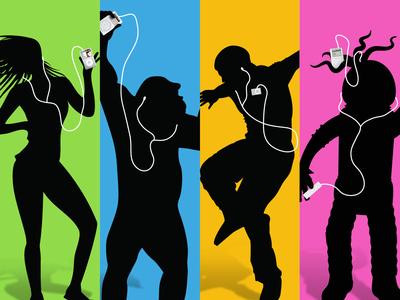Apple Devices and The Reliability Question: A 20+ Year User Retrospective (Updated)
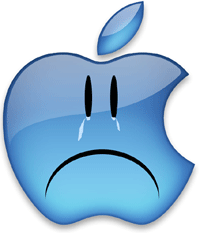
Note (2025): I originally wrote this post in Italian back in 2015. A recent, frustrating experience with my wife's 2021 MacBook Pro 16-inch (more on that later) prompted me to translate and update this piece. It seems the more things change, the more some frustrations with premium tech remain the same. Before diving into my litany of Apple woes, I want to be clear: I'm not an Apple hater. In fact, I'm currently very pleased with several Apple products I own. My M1 Pro MacBook Pro has been fantastic, my iPad Pro is a reliable workhorse, and the iPhone 13 Pro Max (formerly mine, now my wife's) has performed flawlessly. This makes the recurring reliability issues I've faced over the years with other premium Apple devices all the more perplexing.
Me and Apple: The Early Days
I've always liked Apple products, and even in light of recent events, I continue to like them. I still have a green iMac G3, 400 MHz, purchased (used) in 2001, which I keep as a decorative item.
My iBook G4, which arrived in December 2003, served me well, later replaced by a "normal" x86 laptop for compatibility reasons with the virtual machine systems I was already using back then.
I've had two iPhones, a 3G and a 4, a MacBook Pro from 2009, which I'm actually using to write this update, and in November 2013, I thought it was time to accompany the "old" Pro with a new machine to use mainly at home: a MacBook Pro Retina 15" Late 2013. i7 processor, 16 GB of RAM, 512 GB SSD. A beautiful machine. I'd also add to the list an iPod Nano (first version), a more recent iPod Nano, and an iPod Touch.
Me and Apple: The Devices and Their Problems
I've owned a lot of electronics, and like everyone, I've had some problems over the years. However, my personal statistics show that Apple products are beautiful but not exempt from both design flaws and reliability issues. I'll recount all the problems I've had with my Apple devices, ending with what perhaps was, at the time of the original writing, my last device from the Cupertino company. I'm still convinced they are nice products, but they cost too much and are not as reliable as they should be. Everyone will have their own experiences; I'm sharing mine.
Note: Sections on devices 1 through 5, and section 7 ("The iPods"), are largely based on my experiences and writings from 2015, translated and with minor updates. Section 6 details a more recent issue.
1. iMac G3
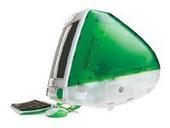
The first Macintosh I owned was an iMac G3, purchased used but in good condition, which I used for a few years. It came with MacOS 9 and supported MacOS X (and simultaneously 9, thanks to Classic Environment). A machine that performed well, apart from some known issues:
- The CD-ROM was very picky, and refused many CDs and DVDs, even original ones. It was a known problem, unfortunately solvable only by using an external USB device.
- The mouse was something unusable. Nicknamed the "hockey puck" mouse, it was round, and it was common to pick it up the wrong way. Being USB, it could be replaced with any mouse, but the whole machine lost part of its charm.
- It overheated. Complemented by the CRT screen and no ventilation fan (a fantastic piece of engineering for its time), there was a problem: as soon as the machine started working intensively, a slight burning smell pervaded the room. I never had shutdowns or particular problems, but its smell was unmistakable.
Overall, an excellent machine, despite showing its limits. Replacing a disk was possible but very unpleasant, RAM was more easily accessible but sometimes, for no apparent reason, it would "lose" one of the two banks and see only one. A known problem at the time, and apparently unsolvable.
2. iBook G4 933MHz
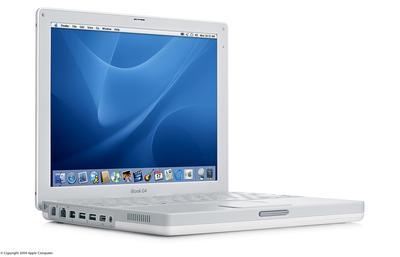
Second purchase, a very important one, a beautiful iBook G4 933MHz. One of the first delivered in Bologna, very expensive, but it was my parents' graduation gift, so they were very happy to give something that would certainly be useful for future work. It was, and very much so. As soon as I got it, I immediately appreciated the design, the PowerPC architecture, the general speed of the system, andrenalinehe quality of MacOS, although I immediately installed Debian on a second partition.
After a few weeks, however, I started to notice a problem: during charging, sometimes, the power adapter's LED would turn off and the computer would continue to run only on battery, until it completely discharged. To get it going again, I had to unplug and replug the power cord. After various tests, I realized that the problem occurred only when the computer was under heavy load, for example, if it was processing video files from the camera (under MacOS) and, both under MacOS and any Linux distribution, during compilation.
Searches on all sorts of forums, until I discovered that many, like me, had noticed the same problem. The supplied power adapter was 45W, while the computer, at full load, required significantly more. This sent it into overload and overheating, activating the protection to prevent it from breaking. In short, Apple supplied a power adapter that was clearly undersized for the iBook's consumption at full load.
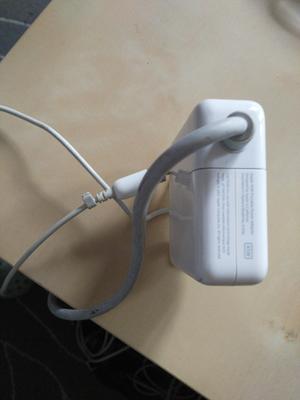
So I went to the service center (which was also the same store where I had bought the laptop) and the answer was almost more absurd than the problem itself:
"We know, it's undersized, and the problem exists. Apple does not provide for a replacement of the power adapter with a more powerful one, as for them it is sufficient for the average user. Besides, we're talking about an iBook, not a Powerbook, so if you need intensive use, you should change computers. Or spend 100 euros and buy the more powerful power adapter."
Speechless, I said goodbye, showing my disapproval, and left. I was "just" a recent Computer Science graduate, young, not a big industrialist, so I wasn't treated with the respect any customer deserved, but rather like a "kid-who-wants-to-scrounge-something". Needless to say, I never set foot in that store again.
I used my iBook daily until March 2008, when it was replaced by an Acer laptop (a shopping center offer), alongside an ever-present desktop computer, as I needed Linux and the BSDs more than MacOS, and the iBook had its little problems with it. I didn't sell it, for both sentimental and practical reasons.
However, I didn't lose heart, and I still believed that Apple was a valid company. So I postponed the purchase of the next Apple device, but didn't rule it out.
3. iPhone 4 (after a brief stint with 3G)
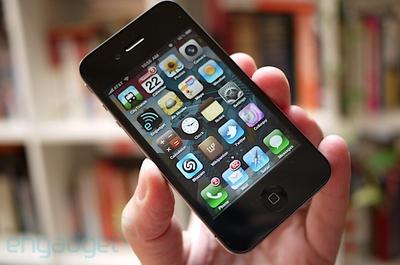
After thoroughly criticizing it, I had the opportunity to experience the iPhone. In an era when Android was still nascent, the iPhone 3G seemed far ahead. As soon as my mobile operator made it available, and after a few months with an iPhone 3G (also slowed down by the device's age relative to current OS versions), I rushed to get a beautiful new iPhone 4.
I still remember the moment I opened the box, on the top floor of my old house. It was August 2010, and I couldn't wait to connect it to my MacBook Pro (which I'll talk about in the next point) to activate it. Excellent materials, excellent feelings of quality, too bad it actually lost signal if held in a certain way, but I never considered it a major problem.
Same for multitasking: iOS doesn't manage true multitasking, or at least not at the individual application level. The situation, over the years, has improved anyway.
After about a year and a half of honorable service, I noticed that the central button ("Home") started to not work well anymore. You had to press it very hard for it to work, and it didn't always register the command given. I decided to take it for service, also because the problem was quite widespread and entire conversations about it could be found online.
Here's my conversation with the employee at the Apple Store in Bologna:
ME: Hi, I have this iPhone 4, here's the receipt, bought through the mobile operator. The central button doesn't work, you can try it yourself. What can be done?
AS: Hello. Known problem, but our policy does not provide for button replacement. We'll give you a new phone (refurbished, Ed.) instead of yours. Shall we proceed?
ME: Sure! Here's the receipt.
AS: Oh, but we don't need that. From the serial number, we know your phone is 20 months old. For us, it's out of warranty. For the replacement, it's 200 Euros. Shall I proceed?
ME: Wait... doesn't Italian law provide for a two-year warranty on products sold?
AS: Apple provides only one year. If you don't like it, go to the consumer association. Or go to your mobile operator and they will handle it, at your expense. For us, your phone is out of warranty, and it's 200 Euros for the replacement. Shall I proceed?
I didn't let him proceed, and I went to my operator. Who, without making a fuss, took the iPhone and after two weeks returned a new (refurbished, Ed.) phone to me without batting an eye. I sold it immediately, as I had already returned to Android with an LG Optimus Black (excellent device, but I never talked about it here), for a good sum. I later found out that the phone ended up in water, dying about a year later.
If I had bought the iPhone at the Apple Store, I would have had to pay for the replacement or start a legal battle. This story that they provide only one year of warranty doesn't seem to denote much confidence in their own products, and it's not the only time it has caused me problems (next point).
4. MacBook PRO 15" Mid 2009
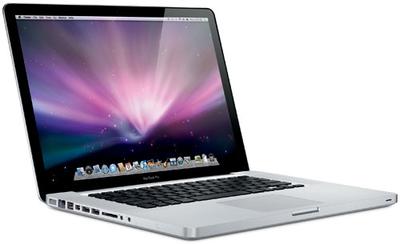
After moving to the (then) new house and discovering that I wouldn't have a decent ADSL connection in the short term, given the space constraints, I decided to give up the desktop computer. During that period, I had also started traveling a lot for work, and I had already begun to get involved in some interesting international projects. The choice was simple: "a single laptop, but good and stable, that doesn't require constant security updates and lasts over time". After a brief investigation, the choice fell on the just-released MacBook Pro 15" Mid 2009. Impossible to find, after visiting all the official Apple dealers in three provinces, they still had one in a shopping center in Bologna. I went to pick it up immediately, on a very hot August day, arrived home, and unboxed it. I'm writing this article on it right now, although the original disk has been replaced by an SSD and then by a hybrid, the RAM was upgraded to 8 GB in 2012, otherwise it's intact, despite having survived a couple of (recent) fairly significant falls.
So it seems this MacBook PRO is perfect... but it's not!
After about 14 months, I noticed that the touchpad button started to become unreliable. Like the iPhone 4 from the previous point. To make it click, you had to press very hard, and it didn't always work. As a temporary remedy, I set tap as click, but given the machine's young age, I decided to take it to Apple service.
Same old story, the same as the iPhone 4:
"We see the problem and confirm that others have come in with it. Unfortunately, you don't have 'Apple Care', so for us, the product is no longer under warranty. If you want, you can leave it, we'll give you a quote, and then you can decide whether to repair it."
I decided to take it away, for the simple reason that having chosen to have ONE valid computer (and other little things, but not enough to manage my usual work virtual machines), I couldn't accept downtime of more than 48 hours.
In short, once again a situation where it seems Apple made a design mistake and the user has to bear the cost. Many companies do it, but I didn't expect it from Apple.
Since then, I haven't had any other particular problems, so overall I've been very satisfied. The battery, after 6 and a half years (at the time of original writing, 2015), still lasts almost two hours, keeping the promises Apple made back then.
Currently (2015), it has two operating systems: Arch Linux as the main OS, which I use every day, and MacOS on an external drive, which I insert as needed.
5. MacBook Pro Retina 15" Late 2013
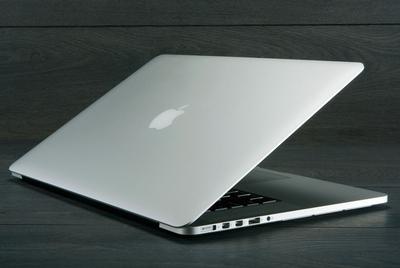
In light of the experience with the old MacBook Pro and its age (I can't stop part of my work just because a computer stops, so I always need one more powerful and one sufficiently powerful to cover, even slowly, all needs), in November 2013 I decided to buy a new MacBook Pro Retina 15". A wonderful computer, with an endless battery, very fast, with a screen capable of not tiring the eyes even after many hours of work. Silent, with the excellent PowerNap function that allows me to always have recent backups on a Banana Pro via Time Machine.
Everything went extraordinarily well from 26 November 2013 - date of purchase - to 16 November 16 2015. While I was working on a remote server via ssh, the (local) terminal started spitting out a series of disturbing errors. It no longer recognized any commands and gave I/O errors. I immediately understood that something was wrong and started doing some tests. Needless to say, my bad feelings were confirmed by reality: the 512 GB SSD was gone.
I was incredulous. The computer was used very little, had 23 battery charge cycles, and had left the house twice, for as many moves. For the rest, I always carry the old MBP, as its value is now low and a possible theft and/or failure wouldn't be so terrible.
I took it for service, knowing that, even in this case, the valid warranty was one year. The aggravating factor, then, was having bought it with a VAT number, so the warranty becomes one year anyway. Fortunately, however, I had subscribed to one of those supplementary insurances that they offer for a few tens of Euros.
After a few days, the phone call arrived. The damage is the SSD, and since there is no third-party part available, it has to be replaced with an original Apple one. The cost? 1,200 Euros. The insurance, however, has a maximum limit of 800. So I'll have to pay the difference.
I was speechless. Again. 1,200 Euros of damage on a machine paid almost 2,800 Euros less than two years ago? I've never had failures on SSDs costing a few tens of Euros, stressed and battered in every way, and the super-mega-awesome Apple SSD dies after less than two years??
I was (and still am, regarding that specific incident) uncertain about what to do back then. Take it back and use it with an external USB 3 drive or pay the difference and have it repaired? Meanwhile, discussions were read online from people who had purchased the same machine around the same time and were having the same problem. Who knows if Apple would decide that the caseload was sufficiently large and that those who had spent all that money shouldn't have to spend further for damage that, undoubtedly, indicated a not insignificant problem.
6. The 2021 MacBook Pro 16-inch: A New Chapter of Frustration
Fast forward to early 2024. You'd think after all these years, things might have improved. And for some products, they have. But then, my wife's pre-Silicon MacBook Pro 16-inch, purchased new in 2021, decided to join the hall of fame of Apple disappointments. From one day to the next, its battery completely died. No warning, just... gone. This wasn't a machine abused or heavily used in terms of battery cycles; it had just over 100 charge cycles on it. Barely broken in, you might say.
The diagnosis? A dead battery. The Apple response? "It's out of warranty". Just over two years old, a premium laptop with a premium price tag, and we're looking at a costly battery replacement. This incident is what truly spurred me to translate and update this old post. It felt like a painful echo of past frustrations, reminding me that for all the gloss and performance, the specter of unexpected hardware failure and rigid warranty policies still looms large over the Apple ownership experience.
7. The iPods
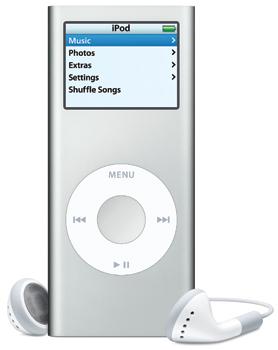
I won't write much about the three iPods I've had, as the experience was pretty much in line with everything else. The first iPod Nano (first model) I put in a drawer because of its poor audio quality. I didn't like it; it was metallic and had low volume. I eventually sold it, as (like all Apple products) the brand's desirability contributed to a good sale.

The second iPod Nano I had, a very welcome gift, was instead the only iPod that fully satisfied me. Good audio, fast, sufficiently streamlined music loading (via iTunes, of course), excellent battery life, it spent years in my car's armrest and as a travel companion. It still works, but now I mainly use Spotify for music, so it's less stressed.
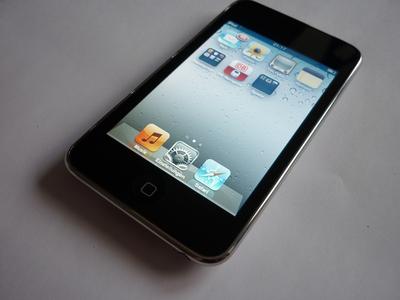
The last iPod I had was a Touch 3g. Unfortunately, I didn't get to use it much; it was a mistaken purchase. When I decided to sell it, there was a problem: due to the violent earthquake that hit Emilia Romagna and which I experienced fully, as my house was a few kilometers from the epicenter, the iPod got irreparably scratched. It was on the table and the tremor made it fall to the ground, ruining part of the front glass and completely scratching the beautiful silver back. It works, but in its condition, it's hardly desirable. So I didn't have any real problems, apart from being disappointed by the fragility of the back.
Final Thoughts (2025)
So, after all these experiences, what do I think of Apple products? They are beautiful and generally well-engineered, but they are not of such superior quality compared to the rest. Or, at least, the price difference is not proportional to the difference in the general quality of the products. This isn't to say all Apple products are flawed. As I mentioned, my current M1 Pro MacBook Pro, iPad Pro, and the iPhone 13 Pro Max (now used by my wife) have been excellent, living up to the Apple promise.
However, the litany of issues I've personally encountered over two decades – from undersized power adapters and faulty buttons to prematurely dying SSDs and now, a suddenly deceased battery in a relatively new, lightly used premium laptop – paints a picture of inconsistency. It's this inconsistency that's particularly galling for a brand that positions itself (and prices its products) at the premium end of the market. One expects a higher baseline of reliability and longevity, and perhaps a more understanding approach when expensive hardware fails unexpectedly just outside a often too-short warranty period.
As of now, I remain cautious. While I appreciate the Apple devices that work well, the repeated stings of significant hardware failures make me hesitant. I've learned that one should never say never, especially in the fast-paced, impatient world of consumer electronics, but my enthusiasm for automatically choosing Apple has certainly been tempered by these experiences. For a premium brand, I simply expect more consistent, long-term reliability.
